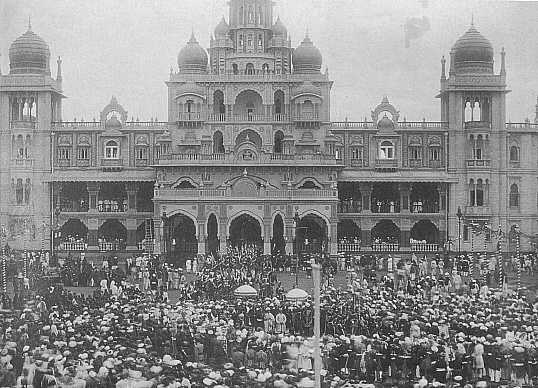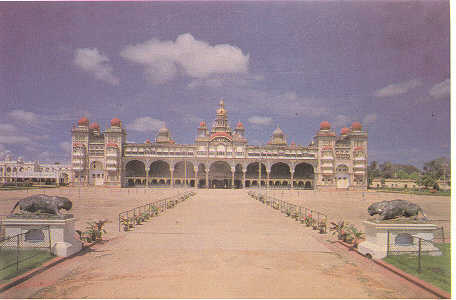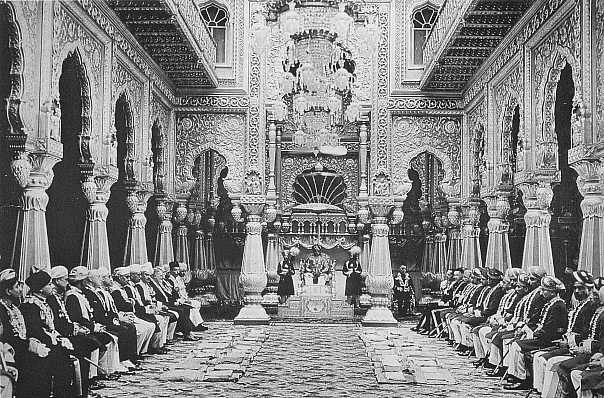Architect
| Home page |
| Early years |
| Pachmari |
| Simla |
| Madras |
| Mysore |
| Post 1920 |
| Literature |
| Web links |
| Information/ Contacts |
The original palace in Mysore was of wooden construction and was burnt down by a disastrous fire in February 1897, said to have started at the closing function of the marriage of Princess Jayalakshmammanniyavaru [8]. The Maharani, then Regent, decided to build a new palace on the model and on the foundations of the old one. This should reflect the grandeur of the old Mysore Palace.
Henry Irwin, who had at that point in time recently retired as Consulting Architect of the Government of Madras received the contract and his plans were approved. The speed with which he drew them up can be appreciated by the fact that construction was inaugurated in October 1897 by Her Highness, the Maharani - only eight months after the fire [9].
The journal Indian Engineering in its issue of October, 1898 speaks of the Government's directive regarding reconstruction of the palace: "...in the reconstruction, stone, brick and iron should be the chief materials used, and that the use of wood and other combustible materials should be avoided wherever possible". The estimated expenditure at the planning stage was Rs. 25 lakhs (Rs. 2 500 000). The report goes on to record: "Mr. Irwin, of Madras, was given the work of preparing a suitable design, which, it should be said in fairness to him, he did most creditably. The design was adopted, Mr. Irwin paid a fee of Rs. 12 000 and the work was put in hand in August 1897. But in an evil hour the Durbar determined that the work should be carried on departmentally...". A mistake was made, comments the editorial, in ordering manufacture of the bricks locally instead of getting them from Madras, as there was nothing wrong with bricks used for the new High Court building at Madras [also a Henry Irwin building]. As it turned out, the experiment proved a failure - according to the journal - both regards the quality of the bricks produced and the expenditure involved [8].
Irwin's fee amounted to just under 0,5% of the estimated total expenditure, modest also by modern standards. The construction of the palace was completed in 1912 at an aggregate outlay of
Rs. 4 147 913, a cost overrun of about 66% compared with the original estimates. Considering the length of time of the construction period, also not bad.
 |
 |
| Prior to 1930 | |
 |
 |
| Dhurbar Hall | |
 |
|
| View from the Ashoka Road |
 Back |
 Top |
 Forward |